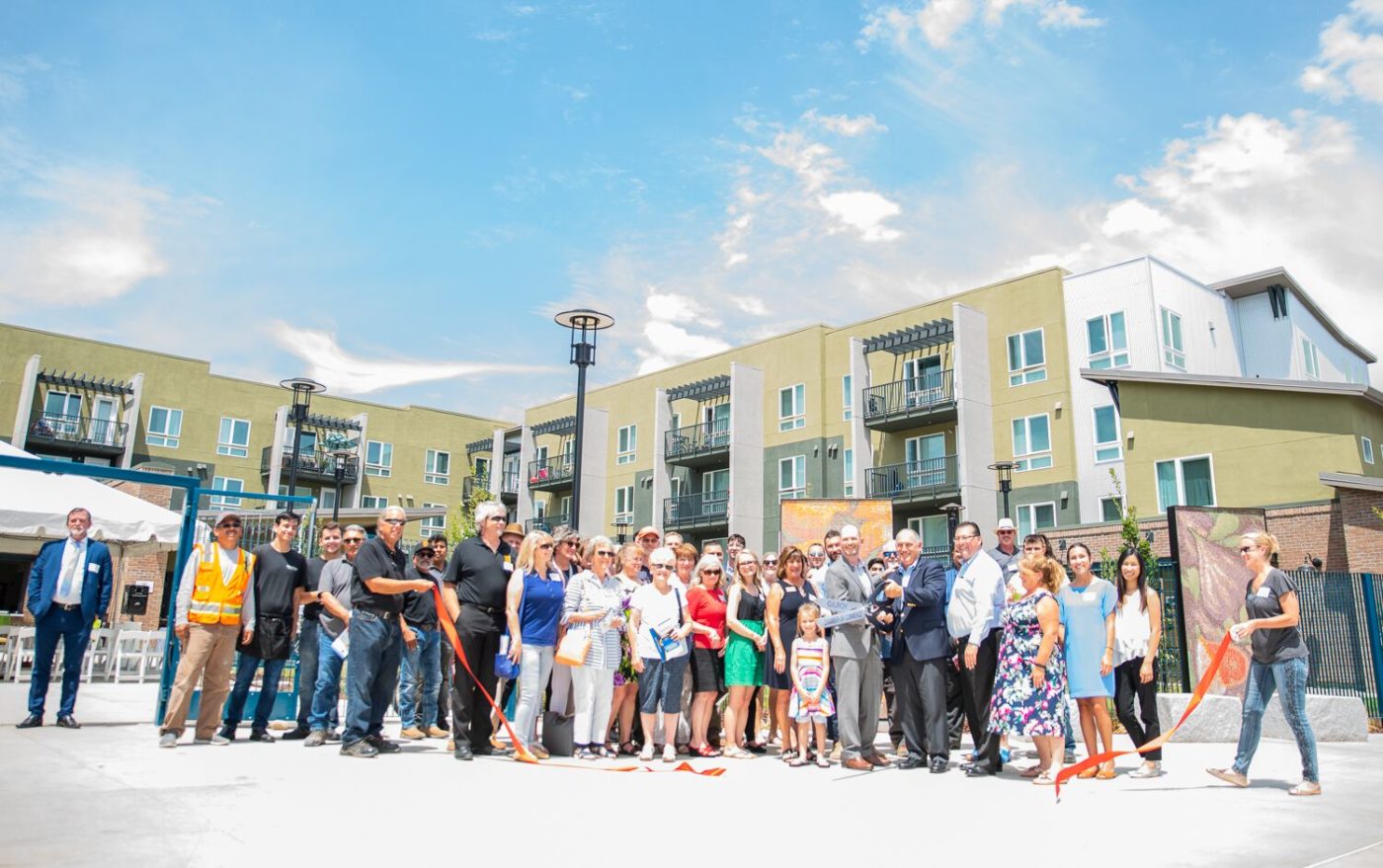Gilroy’s Demographics
Population: 61,033
Households: 16,916
Housing Units: 19,040
Source: California Department of Finance, 2024 Table E-5
Employed Residents: 29,613
Source: ACS 2023 5 year estimates
In 2023, 32.44% of Gilroy’s population was White while 2.12% was African American, 9,84% was Asian, and 57.35% was Latinx. People of color in Gilroy comprise a proportion above the overall proportion in the Bay Area as a whole.
Source: ACS 2023 5 year estimates
Rate of population growth, 2010 to 2020: 16.1%
Rate of housing unit addition, 2010 to 2020: 12.3%
Source: California Department of Finance, Table E-5
Over the same period, Gilroy grew more quickly than Santa Clara County, which had a 9.2% population increase, and the nine-county Bay Area region, which had an 8.6% population increase.
The number of new homes built in Gilroy and Santa Clara County has not kept pace with demand, resulting in longer commutes, increasing prices, and exacerbating issues of displacement and homelessness.
Housing Types in Gilroy
Single family detached: 68.66%
Single family attached: 5.34%
Multifamily small (2-4 units): 9.67%
Multifamily large (5+ units): 14.6%
Mobilehomes: 1.74%
Source: California Department of Finance, 2024 Table E-5
It is important to have a variety of housing types to meet the needs of a community today and in the future. Between 2010 and 2020, the number of single-family units increased more than multi-family units. In Gilroy, the share of the housing stock of detached single-family homes is higher than the average of other jurisdictions in the region.
Jobs & Housing in Gilroy
Jobs: 18,124
Employed Residents per Household: 1.75
Jobs per Employed Resident: 0.61
Jobs-Housing Balance Ratio: 0.95
Source: ACS 2023 5 year estimates
Note: Jobs-Housing Balance is a measurement used by planners that assumes that a balanced community is one where people can both live and work. This ratio compares the number of jobs in a community to the number of housing units.
Jobs-Housing Fit: 6.1 low wage jobs per low-cost rental unit
Source: Jobs from LEHD Origin-Destination Employment Statistics 2022; households from U.S. Census, ACS 2023 5 year estimates B25056, B25061
Note: Jobs-Housing Fit measures the mismatch between wages and housing affordability as the ratio of low-wage jobs (less than $3,333/month) to the number of low-cost rental units (less than $1,500/month). In Gilroy, there are more than 6 low-wage workers competing for each affordable home.
Renting in Gilroy
Percent of population that rents: 37.15%
Source: ACS 2023 5 year estimates
Median Monthly Rent (1 bedroom apartment): $1,995
Rent Change Year over Year: -18%
Source: Zumper, February 2025
Cost Burden in Gilroy
Cost-Burdened (30% – 50% income spent on housing)
Renter Households: 47.06% of renter households (2,958)
Homeowner Households: 33.17% of homeowner households (3,527)
Severely Cost-Burdened (more than 50% of income spent on housing)
Renter Households: 22.81% of renter households (1,434)
Homeowner Households: 11.67% of homeowner households (1,241)
Source: ACS 2023 5 year estimates
Note: Current standards measure housing cost in relation to gross household income: households spending more than 30 percent of their income, including utilities, are generally considered to be overpaying or “cost burdened.” Severe cost burden occurs when households pay 50 percent or more of their gross income for housing. The impact of high housing costs falls disproportionately on extremely low-, very low-, and low-income households, especially renters. While some higher-income households may choose to spend greater portions of their income for housing, the cost burden for lower-income households reflects choices limited by a lack of a sufficient supply of housing affordable to these households.
Homelessness in Gilroy
2022 Unhoused people: 814 people, including 606 unsheltered and 208 sheltered (+16% from 2019)
2019 Unhoused people: 704 people, including 345 unsheltered and 359 sheltered (-2% from 2017)
Source: 2019 and 2022 Homeless Point In Time Count
Overcrowding in Gilroy
Total Rental Homes: 6,285
Overcrowded Rental Homes: 545
Severely Overcrowded Rental Homes: 205
Percent of Rental Homes, Overcrowded: 11.93%
Source: ACS 2023 5 year estimates
- The U.S. Census defines an overcrowded unit as one occupied by 1.01 persons or more per room (excluding bathrooms and kitchens). Units with more than 1.5 persons per room are considered severely overcrowded.
Note: Overcrowding increases health and safety concerns and stresses the condition of the housing stock and infrastructure. Overcrowding is strongly related to household size (particularly for large and very-large households) and the availability of suitably sized housing. Overcrowding impacts both owners and renters; however, renters are generally more significantly impacted.
2023-2031 Regional Housing Needs Allocation (RHNA)
Every eight years, the Regional Housing Needs Allocation (RHNA) process is used to assign each city and county in California their “fair share” of the region’s housing need, by income level. These homes are intended to address the housing shortage, meeting the needs of existing residents and accommodating projected growth in the region.
The RHNA process is critical because state law requires each city and county to make a specific, actionable, and measurable plan, called a Housing Element, that complies with state law and addresses housing needs. It must identify enough sites to hold the RHNA, by income level, and create programs that remove barriers to housing production and protect residents vulnerable to displacement. Local jurisdictions must also take significant steps to affirmatively further fair housing (AFFH), addressing racial and economic segregation and disparities in access to resources, and meeting the unique housing needs of residents in protected groups. The California Department of Housing and Community Development (HCD) is responsible for certifying Housing Element compliance with state law.
In the past, many cities and counties have fallen far short of their RHNA targets, as the Bay Area’s housing crisis continues to grow. In this planning cycle, new laws give HCD additional tools to provide technical assistance and hold jurisdictions accountable to their plans. Each spring, jurisdictions are required to complete an Annual Progress Report on the Housing Element, including the number of homes permitted by income level, program actions taken, and outcomes achieved. The table below shows Gilroy’s RHNA target in the sixth cycle and progress to date in permitting new homes.
| Affordability Level | RHNA Target | Permits Issued | Progress to Target |
| Very Low Income | 669 | 27 | 4% |
| Low Income | 385 | 26 | 6.8% |
| Moderate Income | 200 | 26 | 13% |
| Above Moderate Income | 519 | 317 | 61.1% |
| Total | 1773 | 396 | 22.3% |
Permitting progress as of December 2024. Source: HCD 2024 Housing Element Implementation and APR Data Dashboard.
2014-2022 Regional Housing Needs Allocation
The table below shows Gilroy’s final progress toward meeting the 2014-2022 RHNA.
| Affordability Level | RHNA Target | Permits Issued | Progress to Target |
| Very Low Income | 236 | 229 | 97.0% |
| Low Income | 160 | 741 | 463.1% |
| Moderate Income | 217 | 112 | 51.6% |
| Above Moderate Income | 475 | 1714 | 360.8% |
| Total | 1088 | 2796 | 256.9% |
Permitting progress as of December 2022. Source: HCD 5th Cycle Housing Element Implementation and APR Data Dashboard.
Current Affordable Housing Stock
| Extremely Low-Income | Very Low-Income | Low-Income | Moderate Income | Total Units | Affordable % of Total Housing Stock |
| 0 | 458 | 1131 | 561 | 2159 | 11.4% |
SOURCE: Units reported in the Housing Element Annual Performance Report that received building permits through 2023 were added to the unit counts in the previously reported 2018 Base Year table. This methodology necessarily means that any ELI units, if any, are included in the VLI category since that is how HCD has required production data to be reported. The RHNA data on new units relies on self-reporting by jurisdiction and can include units for which building permits were issued that never got built. The percentage of the total housing stock in the community is based the California Department of Finance’s Table E-5.
See more information on our affordable housing assets page.
Jobs & Housing Development Pipeline
As of January 2022, Gilroy has 0.15 jobs in the development pipeline for every 1 housing unit in the development pipeline.
| Applications Submitted | Approved Projects | Under Construction | Total | |
| Anticipated New Jobs | 201 | 52 | 12 | 266 |
| Housing Units | 181 | 845 | 728 | 1,754 |
Pipeline as of January 2022. Information reported from City of Gilroy. The employment projections are derived by applying square-footage-per-employee factors to building floor areas by four building types: 250 square feet for office/R&D; 1,500 feet for hotels; 550 feet for retail/restaurant; and 2,500 feet for manufacturing/warehouse. All are figures applied to a building’s gross square footage.
Accessory Dwelling Units (ADUs)
ADUs and Junior Accessory Dwelling Units (JADUs) can be effective options for adding much needed housing in California, gently increasing density by adding more homes to a single lot. All California cities and counties are required to permit ADUs and JADUs according to State law. Since 2016, State ADU laws have evolved to make new development more feasible. The California Department of Housing & Community Development (HCD) provides clarity and consistency on State housing law through education, technical assistance, and enforcement. HCD’s 2025 Accessory Dwelling Unit Handbook provides the most up-to-date guidance on State ADU laws.
| 2017 | 2018 | 2019 | 2020 | 2021 | 2022 | 2023 | 2024 | Total |
| 7 | 7 | 11 | 13 | 27 | 16 | 40 | 38 | 159 |
Source: HCD 2024 Housing Element Implementation and APR Data Dashboard.
Affordable Housing Policies
Housing Element Policies
The Housing Element of Gilroy’s General Plan includes policies that support affordable housing and housing for the homeless.
- ELI Housing. Encourage the development of housing affordable to ELI households using regulatory and financing incentives as well as such other policies as: assistance with securing land use entitlements; and making concessions on development standards, especially on required on-site parking ratios and setbacks.
- Alternative Forms of Housing. Gilroy will consider single-room occupancy units, studio apartments and similar housing models affordable to ELI households in higher density areas.
In addition to this policy framework, Gilroy has undertaken the rezoning of several properties to provide opportunities for development of higher density multifamily projects affordable to lower-income households.
Additional Resources
Photo: Sobrato Transitional, Eden Housing


